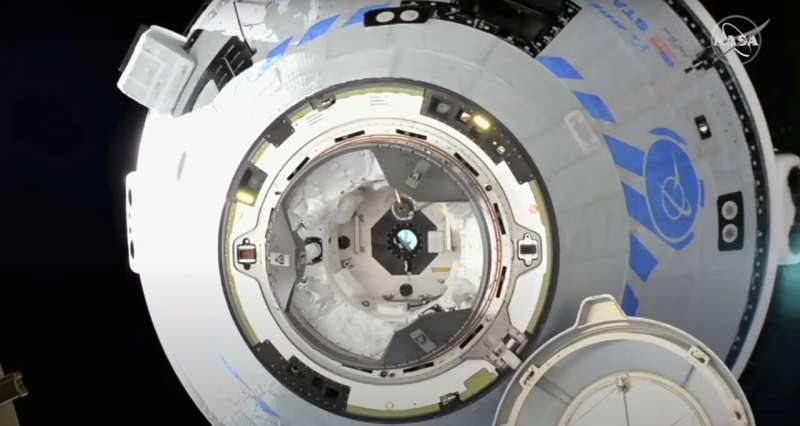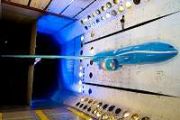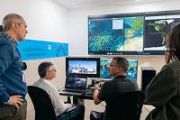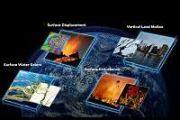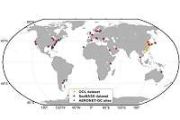
Copernical Team
Ghostly 'mirror world' might be cause of cosmic controversy
 New research suggests an unseen 'mirror world' of particles that interacts with our world only via gravity that might be the key to solving a major puzzle in cosmology today - the Hubble constant problem.
The Hubble constant is the rate of expansion of the universe today. Predictions for this rate - from cosmology's standard model - are significantly slower than the rate found by our most
New research suggests an unseen 'mirror world' of particles that interacts with our world only via gravity that might be the key to solving a major puzzle in cosmology today - the Hubble constant problem.
The Hubble constant is the rate of expansion of the universe today. Predictions for this rate - from cosmology's standard model - are significantly slower than the rate found by our most New calculations of Solar spectrum resolve decade-long controversy about the Sun's chemical composition
 Astronomers have resolved the decade-long solar abundance crisis: the conflict between the internal structure of the Sun as determined from solar oscillations (helioseismology) and the structure derived from the fundamental theory of stellar evolution, which in turn relies on measurements of the present-day Sun's chemical composition. New calculations of the physics of the Sun's atmosphere yield
Astronomers have resolved the decade-long solar abundance crisis: the conflict between the internal structure of the Sun as determined from solar oscillations (helioseismology) and the structure derived from the fundamental theory of stellar evolution, which in turn relies on measurements of the present-day Sun's chemical composition. New calculations of the physics of the Sun's atmosphere yield Unraveling a perplexing explosive process that occurs throughout the universe
 Mysterious fast radio bursts release as much energy in one second as the Sun pours out in a year and are among the most puzzling phenomena in the universe. Now researchers at Princeton University, the U.S. Department of Energy's (DOE) Princeton Plasma Physics Laboratory (PPPL) and the SLAC National Accelerator Laboratory have simulated and proposed a cost-effective experiment to produce and obse
Mysterious fast radio bursts release as much energy in one second as the Sun pours out in a year and are among the most puzzling phenomena in the universe. Now researchers at Princeton University, the U.S. Department of Energy's (DOE) Princeton Plasma Physics Laboratory (PPPL) and the SLAC National Accelerator Laboratory have simulated and proposed a cost-effective experiment to produce and obse Hubble Reaches New Milestone in Mystery of Universe's Expansion Rate
 Completing a nearly 30-year marathon, NASA's Hubble Space Telescope has calibrated more than 40 "milepost markers" of space and time to help scientists precisely measure the expansion rate of the universe - a quest with a plot twist.
Pursuit of the universe's expansion rate began in the 1920s with measurements by astronomers Edwin P. Hubble and Georges Lemaitre. In 1998, this led to the di
Completing a nearly 30-year marathon, NASA's Hubble Space Telescope has calibrated more than 40 "milepost markers" of space and time to help scientists precisely measure the expansion rate of the universe - a quest with a plot twist.
Pursuit of the universe's expansion rate began in the 1920s with measurements by astronomers Edwin P. Hubble and Georges Lemaitre. In 1998, this led to the di Airbus to further develop LISA gravitational wave observatory mission
 Airbus has been awarded a contract from the European Space Agency (ESA) to further develop the implementation of LISA (Laser Interferometer Space Antenna), one of the most ambitious science missions ESA has planned to date. With Phase B1 now underway, the detailed mission design and final technology development activities for the gravitational wave observatory are due to be completed by 2024, wi
Airbus has been awarded a contract from the European Space Agency (ESA) to further develop the implementation of LISA (Laser Interferometer Space Antenna), one of the most ambitious science missions ESA has planned to date. With Phase B1 now underway, the detailed mission design and final technology development activities for the gravitational wave observatory are due to be completed by 2024, wi China's Zhurong rover switches to dormant mode in severe Martian dust storm
 Mars rover Zhurong has been switched to dormant mode while waiting out a dust storm on the surface of the planet, the China National Space Administration said on Friday.
The latest images taken by cameras onboard China's Tianwen-1 Mars orbiter show a dust storm passing over the patrol area of Zhurong. Scientists compared them with photos taken in the last two months and analyzed recent pow
Mars rover Zhurong has been switched to dormant mode while waiting out a dust storm on the surface of the planet, the China National Space Administration said on Friday.
The latest images taken by cameras onboard China's Tianwen-1 Mars orbiter show a dust storm passing over the patrol area of Zhurong. Scientists compared them with photos taken in the last two months and analyzed recent pow Sampling Strategy for the Delta Front Campaign
 The past few weeks have been exciting ones for Perseverance's science team. At the "Enchanted Lake" site, we took our first look at what appear to be some of the bottommost sedimentary layers that make up the Jezero crater delta.
Since then, we've re-traced our steps back towards "Three Forks" and have begun the ascent of the delta near "Hawksbill Gap." It's along this Hawksbill Gap route
The past few weeks have been exciting ones for Perseverance's science team. At the "Enchanted Lake" site, we took our first look at what appear to be some of the bottommost sedimentary layers that make up the Jezero crater delta.
Since then, we've re-traced our steps back towards "Three Forks" and have begun the ascent of the delta near "Hawksbill Gap." It's along this Hawksbill Gap route Artemis I Moon Rocket to Return to Launch Pad 39B in Early June
 The Space Launch System (SLS) rocket and Orion spacecraft are slated to return to launch pad 39B at NASA's Kennedy Space Center in Florida in early June for the next wet dress rehearsal attempt.
Engineers successfully completed work on a number of items observed during the previous wet dress rehearsal test. This includes addressing the liquid hydrogen system leak at the tail service mast u
The Space Launch System (SLS) rocket and Orion spacecraft are slated to return to launch pad 39B at NASA's Kennedy Space Center in Florida in early June for the next wet dress rehearsal attempt.
Engineers successfully completed work on a number of items observed during the previous wet dress rehearsal test. This includes addressing the liquid hydrogen system leak at the tail service mast u Terran Orbital announces DARPA award
 Terran Orbital Corporation (NYSE: LLAP), a global leader in small satellite solutions, primarily serving the United States aerospace and defense industry, has announced that its subsidiary, PredaSAR Corporation, received a contract award from the Defense Advanced Research Projects Agency (DARPA) under an Other Transaction Authority for Prototype Agreement. Specific terms of the Agreement were no
Terran Orbital Corporation (NYSE: LLAP), a global leader in small satellite solutions, primarily serving the United States aerospace and defense industry, has announced that its subsidiary, PredaSAR Corporation, received a contract award from the Defense Advanced Research Projects Agency (DARPA) under an Other Transaction Authority for Prototype Agreement. Specific terms of the Agreement were no Boeing docks crew capsule to space station in test do-over
